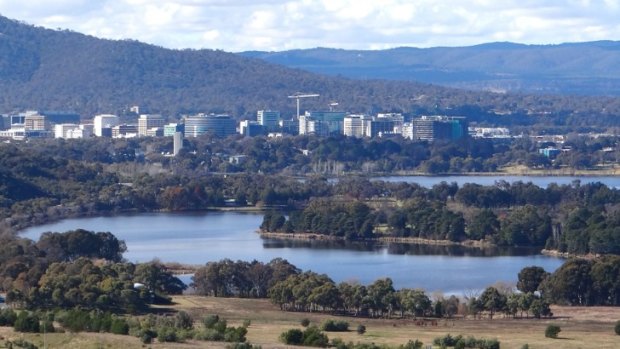
View from Dairy Farmers Hill towards the cityCredit: Linda Muldoon
A couple of decades ago, when my head was routinely buried in economic textbooks (at least that's what I told my parents they were) at the ANU, I'd often take my clapped-out Mitsubishi Sigma for a spin (OK, splutter) along the nearest bit of dirt. It was a track that led off Lady Denman Drive to a hill poking out above the pines just to the west of Scrivener Dam.
The hill is known as Dairy Farmers Hill and back then, if you didn't mind negotiating a couple of kilometres of pot-holed and deeply rutted dirt, it was relatively easily accessible - but, despite its lofty views, I never saw another soul. Not once - just a stone's throw from the city, yet it felt like I had the place to myself. Perhaps it was the odd hours I kept back then? Nonetheless, it soon became my place - that secret spot where I went to clear my head of J-Curves and other jargonistic economic theory. It was also a welcome escape from overly-possessive girlfriends and, with its expansive 360-degree views, a place to dream of trips further afield into the Brindabellas.
I became so attached to my hill that I started taking photos with the nifty self-timer on my new Kodak camera, posing under the biggest pine tree atop the hill. Some days, I was resplendent in my garish tennis gear; other times my PJs and even huddled under an umbrella during a downpour. I started quite a collection and the best of them took pride of place on the walls of my dorm room, interspersed, of course, with much more alluring images of a youthful Elle Macpherson (heck, that does date me). Oh, OK, and Pamela Anderson of Baywatch fame.
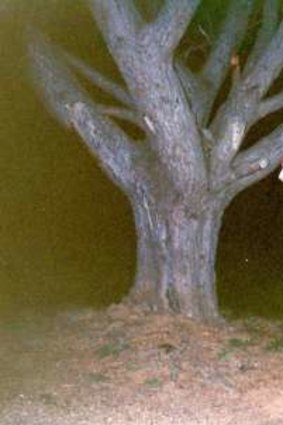
Tim in his pyjamas at Dairy Farmers Hill in 1991
Somewhat puzzled by my obsession with my hill, my mates once dared me to pose for a shot under my favourite tree in what can only be described as an unsavoury precursor to the mankini, which they generously provided. Being young and silly (and, more importantly, wanting to claim the case of free beer on offer) I foolishly accepted. Somehow, the next day, before I had a chance to take the roll of film (remember those days?) in for processing, it went missing. I never did find the film. However, later that week the image of your scantily clad-columnist was plastered all over the social pages of the university's newsletter. (Don't worry about trying to find back copies; I spent a week grabbing as many copies as I could from the Union Court shops, then disposing of them thoughtfully in the college's incinerator!)
After uni, life moved on and I only occasionally visited DFH (as I affectionately referred to Dairy Farmers Hill), often taking visitors there to show them a different view of Canberra. Although expansive, I find the view from Mount Ainslie a little too cliched.
Then came the firestorm of 2003 that razed the forest. The area around DFH was closed because of several safety issues and never really re-opened as it subsequently became a construction zone as part of the National Arboretum.
...my mates once dared me to pose for a shot under my favourite tree in what can only be described as an unsavoury precursor to the mankini.
I thought I'd never get the urge to head back to my hill - too much had changed. But last month, while cleaning out the old boxes in the spare room, I stumbled upon a couple of the old snaps of my youthful figure standing under my favourite pine and, with the arboretum permanently opening to the public, last week (with due permission of course), amid a nostalgic urge, I trudged up to DFH.
The panoramic view from the top hasn't changed much - you can still make out the channel where the Molonglo flowed pre-Lake Burley Griffin and the city skyline (somewhat higher and more cluttered) to the east while, to the west, the blue haze still shrouded the ragged realms of my beloved Brindabellas. However, without my clapped-out Sigma, and without wind whispering through a long-gone pine forest, my hill just wasn't quite the same.
And, of course, it's not my hill, anyway. Although during my uni visits it sure felt like I was the only one who went there, I've since spoken to a surprising number of others who also took visitors to DFH for a different perspective of the bush capital. That said, I suspect I'm still the only person to have visited there in a mankini.
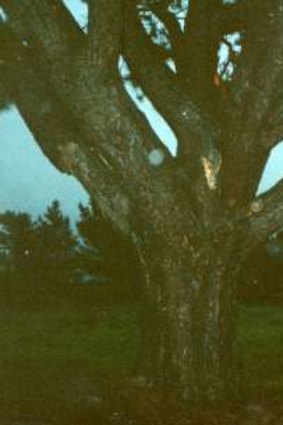
Tim braving the elements atop Dairy Farmers Hill in 1991
I've recently discovered that DFH was also a special place for the first people of the region. Adrian Brown, Ngunnawal Caring for Country Ranger for the ACT Parks and Conservation Service, revealed to me ''it would have been of special significance to the Ngunnawal People who would have used it as a viewing platform to identify pathways around the Molonglo River, to see where animals such as kangaroos and birds were and to talk about country to the younger men''. Although focus in recent years has been on the establishment of over 100 forests of rare and endangered trees from around the world, trees, by their nature, take years to grow into a forest.
For me, the highlights are the two older plantings on the site that pre-date the arboretum.
Just near the entrance, and easily viewed from the Tuggeranong Parkway, are the Himalayan Cedars (Cedrus deodara) - a crunch through the pine needles that carpet the walking track that winds down from a hidden BBQ area here is an absolute must-do. Then there's the charismatic Cork Oaks (Quercus suber), the story behind which is generally not known to most of the thousands of motorists who whiz past it on William Hovell Drive each day.
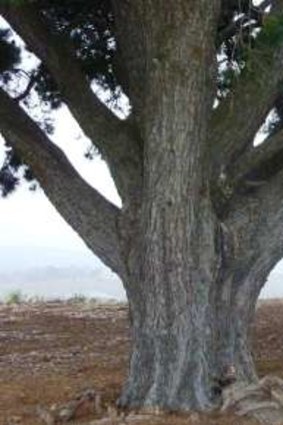
Tim under his favourite tree on Dairy Farmers Hill earlier this weekCredit: Ben Roberts
The idea for the plantation of cork-bearing trees dates back to the genesis of Canberra and plans for our city to be as self-sufficient as possible. In 1916, Walter Burley Griffin obtained the first acorn for planting from a tree at Duntroon. He arranged for a larger shipment from Spain, but the acorns were lost when the ship carrying them, the SS Boorara, was torpedoed and sank. A second replacement shipment arrived soon after and 9500 trees eventually planted.
Today, following a number of thinning operations, about 6000 healthy trees remain and, with their distinctive, partially harvested black trunks, is like walking through a giant stand of pantyhose. It's a 45-minute or so return walk from the Village Centre, but well worth it.
Today, at the arboretum's opening festival, you won't see me scoffing coffee at the brand new cafe (it's got a knock-out view though); nor will you find me checking to see if the plantings of the Purple Leafed Smokebush really are purple; nor marvelling at the other 100 or so stands of trees that, in years to come, will grow into a truly spectacular forest. No, instead, you'll probably find me at my favourite old haunts - gazing up at the towering Himalayan Cedars, imaging them coated in snow or picnicking among the curious Cork Oaks. I might even stroll up to the DFH and pose for one more contemporary photo for my collection. But don't worry; Mrs Yowie tossed out my mankini years ago, so if you come along it'll be safe to enjoy the view.
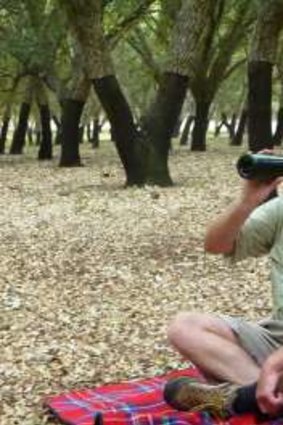
Enjoying a corked-drink amongst the historic cork oaksCredit: Ben Roberts
FACT FILE
Arboretum Opening Festival: A range of fun, food and fabulous entertainment for all ages. Saturday 2 February, 10am – 3pm. Forest Drive (off the Tuggeranong Parkway).
Parking: There is no public parking, except disabled parking, available on the site today. Free ACTION buses will depart regularly from a number of locations around the ACT, including Canberra Stadium, and the City and Woden Bus Interchanges. For more details, call Canberra Connect on 132281 or www.nationalarboretum.act.gov.au
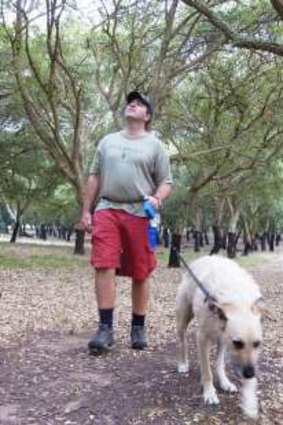
Ben Roberts and his dog Ralph enjoy a stroll through the historic cork oak plantationCredit: Tim the Yowie Man
Can’t make it to the festival? The arboretum is now open every day. 6am – 830pm during Daylight Savings and 7 am - 5:30 pm during Standard Daylight hours. The Village Centre is open from 9am to 4pm seven days a week for general public access. Paid parking is available (but remember not today) at the Village Centre, near the Himalayan Cedars Forest and at Dairy Farmers Hill, with all proceeds going towards projects at the Arboretum.
Did You Know? The Cork Oaks were most recently harvested in 2001 and 2005. In 2001, the cork was sold to orchid nurseries (as backboards to grow the plants on) in Queensland while a number of local wine bottles were corked using cork from the 2005 harvest.
ARBORETUM ANIMALS
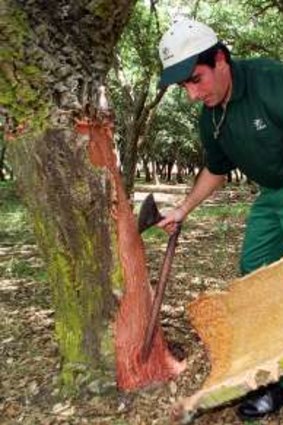
Portuguese Cork Stripper Manuel Graca harvesting cork from the Canberra Cork Oaks in 2001Credit: Peter Wells
If you wander through the hundred forests (actually there's 104) of the arboretum you won't just get an opportunity to gawk at fascinating and rare flora from around the world, but you might also stumble on the odd native critter or two.
Jocelyn Plovits, Chair of the Council of the Friends of the National Arboretum Canberra Inc reports that her fellow volunteers have had close encounters with all sorts of creatures big and small, including observing a female bird-dropping spider lay at least 15 egg sacs over a season in the Dawn redwoods. However, her most memorable encounter involved a short-beaked echidna, which during one of the arboretum's first open days trundled into the middle of the intersection at the main entrance, seemingly oblivious to the heavy traffic.
Clad in a hi-vis vest, one of the Friends, Bev Robinson who was there to direct traffic, ran into the middle of the intersection and shepherded the mischievous monotreme onto the median strip, where it very firmly rejected all efforts to be rescued and dug itself irretrievably into the earth ''Leather gloves, a folded towel and three Friends vests did not save our fingers from the protective spines it deployed,'' Plovits says.
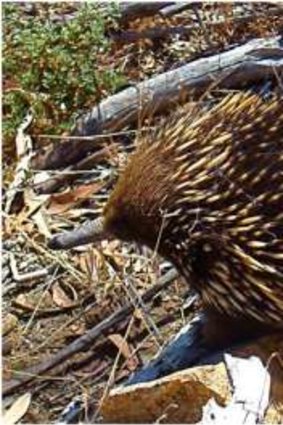
One of the arboretum’s more spiky inhabitantsCredit: Linda Muldoon
Realising they had been out-witted, the trio of Friends carefully placed it into a cardboard box and placed a towel and spare high-vis vest over the spot to protect it in its vulnerable position, which was right on the verge of the road and went to seek help from the nearby National Zoo and Aquarium.
However, before help arrived the elusive echidna was on the move again, Plovits grabbed the towel and rolled the echidna into the box before it had time to move into the intersection again. With her spiny friend scrabbling in the cardboard box (and keeping her fingers crossed that it would not escape and burrow itself into the seat of the car) Plovits drove it deep into the Arboretum, far from roads, where she released it.
''Within a minute it had reburied itself in the earth,'' says Plovits, who hopes that the quiet murmur she heard come from its impromptu burrow was a ''thanks Friends!'' Oh, how I love a story with a happy ending.
Sign up for the Traveller newsletter
The latest travel news, tips and inspiration delivered to your inbox. Sign up now.